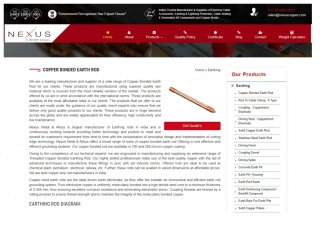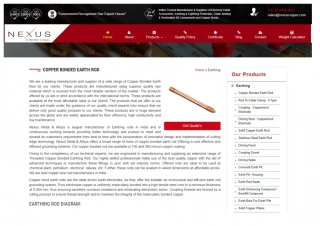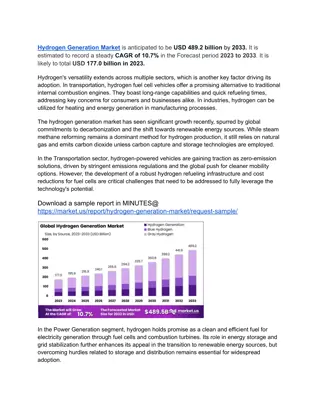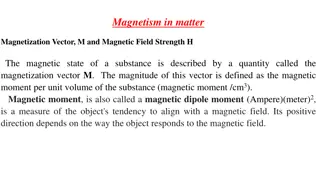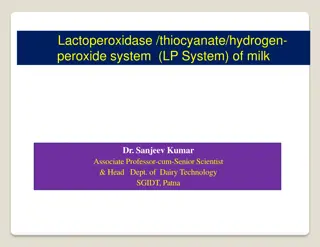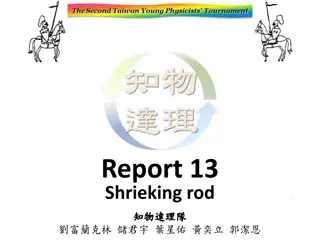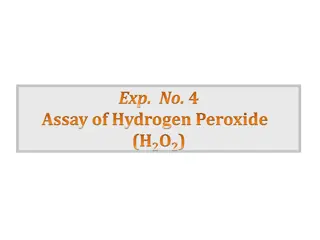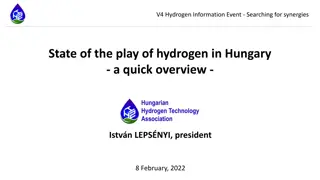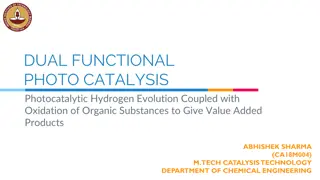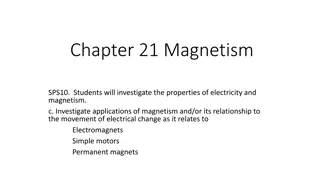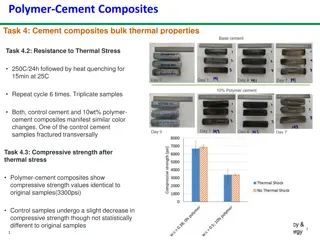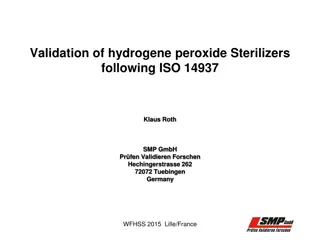Colorimetric Detection of Hydrogen Peroxide Using Magnetic Rod-Based Metal-Organic Framework Composites
Nanomaterials, particularly magnetic rod-based metal-organic frameworks composites, are gaining attention for their exceptional properties and various applications in different fields. This study by Benjamin Edem Meteku focuses on using these composites for colorimetric detection of hydrogen peroxide (H2O2) and pollutant elimination. The research explores the synergistic effects of magnetite, MOF, and gold properties to enhance H2O2 detection. The methodology involves a series of steps including hydrolysis, reduction, functionalization, and deposition to develop the sensing platform. The colorimetric detection method involves a specific sequence of reactions for H2O2 detection. The study highlights the importance of detecting H2O2 due to its widespread use and potential cytotoxicity at higher concentrations.
- Nanomaterials
- Colorimetric Detection
- Hydrogen Peroxide
- Metal-Organic Frameworks
- Pollutant Elimination
Download Presentation

Please find below an Image/Link to download the presentation.
The content on the website is provided AS IS for your information and personal use only. It may not be sold, licensed, or shared on other websites without obtaining consent from the author. Download presentation by click this link. If you encounter any issues during the download, it is possible that the publisher has removed the file from their server.
E N D
Presentation Transcript
Magnetic rod-based metal-organic frameworks metal composites for colorimetric detection of hydrogen peroxide (H2O2) and pollutant elimination by Benjamin Edem Meteku College of Chemical Engineering, China University of Petroleum
Outline Outline Introduction Motivation Methodology Results Conclusion References
Introduction Introduction Nanomaterials have gained significant attention in recent years due to their unique size (1-100 nm) and outstanding properties i.e. surface area, optical properties, ease of synthesis etc. [Roduner, 2006] Potential applications of nanomaterials in various fields including biomedicine, gas storage, catalysis, environmental monitoring and remediation etc. [Maurin et al., 2017 and Meteku et al., 2020]
Introduction Introduction There is an increase in demand for hydrogen peroxide due to its green nature and is currently used extensively in the paper industry, dentistry, environmental remediation decontamination of PPEs etc. [Beam et al., 2020] Detection of hydrogen peroxide is of prime importance due to its cytotoxicity when concentrations are beyond a minimum threshold of 75 ppm. [Sun et al., 2016]
Motivation Motivation Plausible synergistic effect between magnetite, MOF and Au properties Motivation The need for enhanced detection of Hydrogen peroxide
Methodology Methodology CTAB assisted hydrolysis at 87 C for 12 hrs to form -FeOOH Reduction of -FeOOH at 240 C for 8 hrs under N2 using PAA for morphology preservation MAA functionalization of nanorod followed by layer-by-layer growth of MIL-100(Fe) on magnetic rod Deposition of reduced Au on Fe3O4@MIL-100(Fe)
Methodology Methodology Colorimetric Detection of H2O2 Fe3O4@MIL-100(Fe)-Au (4 mg/mL, 100 L) + Sodium acetate-acetic acid buffer solution ( pH =4, 2400 L) + TMB solution (1.55mM in ethanol, 480 L) + H2O2( 30%, 100 L) (Incubation for 5 min. followed by UV-vis analysis)
Methodology Methodology 4-nitrophenol reduction 4-nitrophenol solution (0.18 mM, 6 mL) + freshly prepared NaBH4 solution (0.2 M, 4 mL) + Fe3O4@MIL-100(Fe)-Au ( 4 mg) Bacteria adsorption Composite conjugation with antibody followed by bacteria adsorption with/without magnetic field
Results Results a)TEM image of Fe3O4@MIL-100(Fe)-Au; b, c) STEM HAADF image of composite; Corresponding elemental analysis results d) Au; e) C; f) Fe and g) O
Results Results a b a) XRD for Fe3O4@MIL-100(Fe)-Au; b) FTIR of Fe3O4@MIL-100(Fe)-Au
Results Results a b a) TGA of Fe3O4, Fe3O4@MIL-100(Fe), and Fe3O4@MIL-100(Fe)-Au; b) VSM for Fe3O4 and Fe3O4@MIL-100(Fe)-Au
Results Results 1.2 UV-vis spectra for TMB oxidation with H2O2 without nanozyme (black), with nanozyme(red), and with nanozyme on a magnetic field (blue) ( Inset picture: TMB+H2O2 (left), TMB +H2O2+Nanozyme (middle), and TMB +H2O2 + Nanozyme (on magnetic field) (right)) TMB+H2O2 TMB+H2O2+Catalyst TMB+H2O2+Catalyst (Stirred) 1.0 0.8 Absorbance (a.u) 0.6 0.4 0.2 0.0 500 600 700 800 Wavelength (nm)
Results Results UV-vis spectra for a) Non-magnetic field-assisted reduction of 4-nitrophenol b) Magnetic field-assisted reduction of 4-nitrophenol
Results Results a b TEM of a) Non-magnetic field-assisted bacteria adsorption (capture) b) Magnetic field-assisted bacteria adsorption (capture)
Conclusion Conclusion Fe3O4@MIL-100(Fe)-Au was successfully used for the detection of H2O2 while the magnetic property of the Composite was further utilized to enhance the rate of detection The synthesized composite proved to be versatile and can be used for pollutant degradation and dye adsorption
References References 1. Roduner, E. Size matters : why nanomaterials are different. 2006, 583 592, doi:10.1039/b502142c 2. Maurin, G.; Serre, C.; Cooper, A.; F rey, G. The new age of MOFs and of their porous-related solids. Chem. Soc. Rev.2017, 46, 3104 3107, doi:10.1039/c7cs90049j. 3. Meteku, B.E.; Huang, J.; Zeng, J.; Subhan, F.; Feng, F.; Zhang, Y.; Qiu, Z.; Aslam, S.; Li, G.; Yan, Z. Magnetic metal organic framework composites for environmental monitoring and remediation. Coord. Chem. Rev.2020, 413, 213261, doi:10.1016/j.ccr.2020.21326 4. Beam, E.; Cih, J.C.N.; Cih, M.D.A.; Ramar, K. Effect of vaporized hydrogen peroxide reprocessing on N95 respirators. 2020, 1 2, doi:10.1017/ice.2020.371 5. Sun, J.; Li, C.; Qi, Y.; Guo, S.; Liang, X. Optimizing colorimetric assay based on V2O5 nanozymes for sensitive detection of H2O2 and glucose. Sensors (Switzerland)2016, 16, doi:10.3390/s16040584


